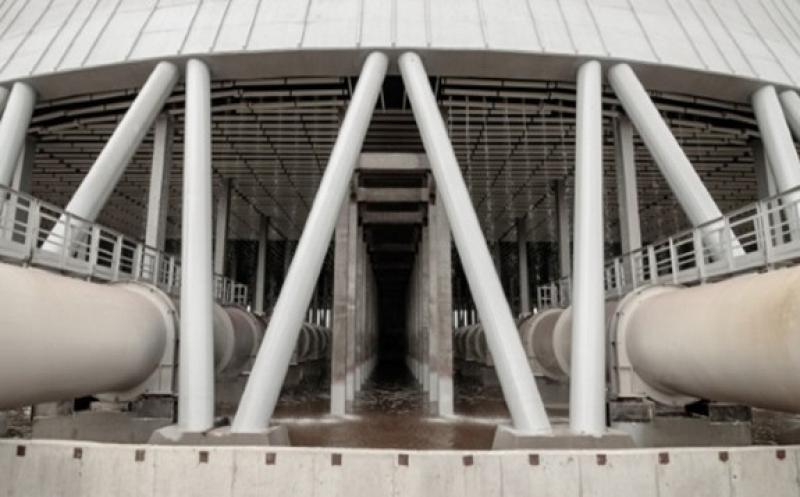Russia's Rosatom has completed hydrostatic testing of the catch basin of Leningrad II-2’s evaporative cooling tower. At 167 metres high, it is one of the tallest industrial facilities in the Leningrad region, Rosatom said.
 Leningrad II-2 is under construction in Sosnovy Bor in western Russia (Image: Rosatom)
Leningrad II-2 is under construction in Sosnovy Bor in western Russia (Image: Rosatom)
First, the open pool tank was filled to the design level of -1.35 meters and a day later to -0.3 metres from ground level. In total, 28,000 cubic meters were required to test the hydraulic concrete basin for strength and secureness.
"The main purpose of the tests was to check the special characteristics of building materials and the quality of work on the construction of the pool as a whole," said Alexander Belyaev, chief engineer of the Leningrad II project.
"Throughout the entire process of hydrotesting, plant personnel conducted round-the-clock monitoring of the water level and checked for an absence of leaks in this technological element of the cooling tower. As a result, not only the tightness of the drainage basin was confirmed, but also its ability to withstand the serious loads envisaged by the project in relation to the hydraulic structure of the plant," he added.
At unit 2, one evaporative cooling tower was built instead of two, as had been built for unit 1, enabling a significant reduction in capital costs, energy consumption and land use, whilst maintaining all the technological requirements and nuclear safety, Rosatom said.
The existing Leningrad plant site in Sosnovy Bor has four RBMK-1000 units, while Leningrad II will have four VVER-1200 units. Leningrad unit 1 was shut down for decommissioning in December last year. Leningrad II unit 1 was connected to the grid on 9 March 2018, becoming the second VVER-1200 reactor to start up, following the launch in 2016 of Novovoronezh unit 6.